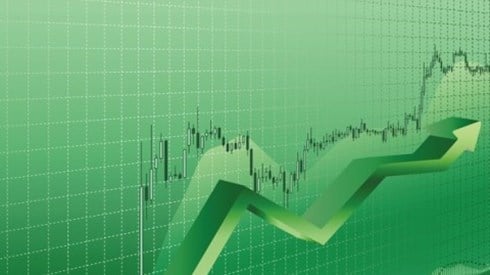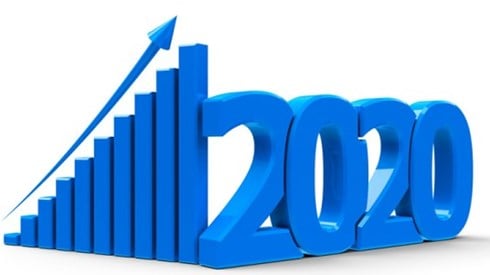Uncertainty, Catastrophe Losses Likely To Harden Markets into 2022

June 14, 2021

Hardening in the reinsurance market will likely continue through 2022, as reinsurers respond to heightened uncertainty from social inflation, catastrophe losses, and claims related to the COVID-19 pandemic, according to a recent report from Swiss Re Institute.
The tighter capacity in the reinsurance market is largely the result of reinsurers' reduced risk appetite, rather than a shortage of capital, according to the reinsurer. Increased uncertainty in modeling related to social inflation, natural catastrophe losses, and the pandemic are driving that reduction in risk appetite, Swiss Re says.
Macro risks facing reinsurers are high, according to Swiss Re, with a growing focus on rising inflation and interest rate scenarios, which can trigger adverse reserve development and losses in asset valuations.
In its Economic Insights report, titled The Re/Insurance Underwriting Cycle: Hard Market Conditions Go on, Issue 12/2021, Swiss Re notes that re/insurance rates have been hardening since 2018, with price momentum accelerating at renewals this past January.
Considering the fact that the hardening is being driven by reduction in risk appetite rather than decreased capacity, the reinsurer notes that the capital losses the industry experienced last year were temporary as asset values quickly recovered off the pandemic-fueled lows experienced in March 2020.
In fact, Swiss Re cites Aon data noting that existing global reinsurers and some newcomers raised nearly $15 billion in capital in 2020 to take advantage of hard market opportunities created by attractive rates.
"The reduction in re/insurers' risk appetite is driven by modeling uncertainty in an environment of ambiguity about macro developments and volatile capital markets," the report says. "Elevated modeling uncertainty arises from multiple factors including social inflation, which has pushed up US liability claims; prior-year adverse reserves development, uncertainty around COVID-19 business interruptions (BI) losses; successive years of above-average cat losses; continued uptick in secondary peril losses; and increased scrutiny of the modeling of the climate change impacts."
The report notes that recent market estimates of global industry COVID-19 claims range from $30 billion to $60 billion. Meanwhile, the 2020 North Atlantic hurricane season brought a record 30 named storms, 12 of them making landfall in the US and causing $20 billion in insured losses. Natural catastrophe losses in the United States have already exceeded $20 billion this year, according to Swiss Re, with forecasts calling for another "above average" North Atlantic hurricane season.
The actual effect of catastrophes on the underwriting cycle is smaller than often assumed, however, the Swiss Re report says. Lost industry capital is generally easy to replenish if market opportunities arise. Catastrophes tend to have their largest impact on supply and demand in the insurance and reinsurance markets when they reveal unrecognized or unmodeled risks, according to Swiss Re.
On the liability front, US liability claims have been trending higher since 2015, according to the report, with the current social inflation experience resulting from single-claimant cases rather than class actions or legislative changes.
Factors driving social inflation, according to Swiss Re, include the plaintiffs bar's increasing use of psychology-based strategies, data analytics, digital media advertising, and litigation funding. Other factors include jurors' attitudes on issues like social injustice, rising inequality, and a growing negative sentiment toward corporations.
"The uncertainty about liability reserves and pricing new business is particularly affecting excess liability and liability reinsurance treaties," the report says.
In addition, healthcare costs and wage inflation are key factors driving the severity of casualty claims, the report says.
Social inflation is also a factor in property insurance markets, Swiss Re says, "particularly in connection with the assignment of benefits in Florida, which is driving up homeowners' attritional claims costs."
Low investment returns on (re)insurers' earnings is adding momentum to hardening rates, the report says.
"Aon's January 2021 reinsurance market outlook reported that investment returns were lower at all reinsurers in its analysis," the report says. "Even after rises in the first quarter this year, interest rates and consequently investment returns remain low by historic standards. This places more focus on underwriting profitability to make up for the lost investment income in order to compensate investors for their cost of capital."
The report notes that there is a strong long-term relationship between combined ratios and nominal interest rates, though interest rates are only a minor factor in changes in underwriting metrics.
Still, an increasing focus on rising inflation and interest rate scenarios highlights the elevated macro risks confronting insurers and reinsurers, Swiss Re says. Those risks can trigger adverse reserve development and reductions in asset values.
Swiss Re notes that the reinsurance capacity provided by third-party capital is important to the property catastrophe business, and reduced capacity in collateralized reinsurance, which has experienced poor returns in recent years, is a factor in the selective tightening in the retrocession market, and also plays into hardening rates in the reinsurance market.
Alternative capital and standby capital from potential investors are increasingly shaping competitive market dynamics, the report says.
While rate increases are likely to continue both this year and next, rate increases in 2022 would further increase the profitability of new business, Swiss Re concludes.
June 14, 2021




